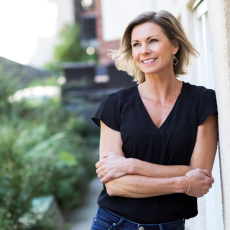What has been driving the growth that BayWa r.e. has been benefiting from it lately?
BayWa r.e. made significant progress across its projects, services, distribution and energy solutions business entities these past years and predicts record growth and expansion in 2022 with the realization of more than 1 GW of new renewable projects. We anticipate further strong growth with continued expansion in solar, offshore and onshore wind, more PPAs with leading corporations and even greater focus on evolving technologies such as green hydrogen and storage, as the pace of the global renewable energy transition increases.
It has become apparent at a global level, from policy makers, to the industry, to individuals, that renewables are the way forward. We are simultaneously experiencing a climate and energy crisis. Addressed together, we can propel forward the renewable transition and transform energy markets. Transitioning to renewable power and increasing energy security is the only credible, sustainable, and economically viable option. Sustainable solutions are already available, and it is just the case of implementing them quickly enough.
Our company has been very fortunate to attract many new, motivated employees to lead the company during these times - globally we nearly doubled our staff in the last two years.
Thus far our work has been focused on wind and we added solar to our portfolio a year ago. We are most excited about it, solar in Sweden is now where wind was 15 years ago. A lot has happened in the past 12 months and you need to be fast in order to secure land, there is a PV market “gold rush of sorts.
Scandinavia in particular has been ahead of the game in this respect - how is the company’s Nordics department that you are overseeing experiencing this phase?
Scandinavia is a crucial market for us, in Sweden alone we are looking to at least double our consumption due to electrification. There is a small population size, relative to other parts of the world, and we benefit from strong winds throughout the country and ample solar potential in the South. Add to this the stable political situation, and it becomes a very clear path forward. From the demand side, there are many industry segments, green steel being just one of them, already ramping up. The chemicals industry is also looking to move away from fossil fuels, which is generating huge demand for renewables.
We read about BayWa r.e.’s recent PPA with Nestle, is this a business line that is also popular for you in the Nordics?
Certainly, it has been common practice for several years, particularly for wind power, also because Sweden never had feed-in tariffs and there was a lot of price volatility, making bank loans difficult to obtain. PPAs brought solidity to our bank applications as they were proof of long term income. It all started with demand from aluminium smelters in Norway and other large players, but lately it has really been a wide array of companies with high electricity consumption and evolved into a mature and stable market.
What is your strategy of staying competitive in the solar energy space, given the fast pace it is moving with and high competition?
We come in with a wealth of experience from developing more than 3 GW of solar projects globally but we are also benefitting from the experience we got in Sweden from developing wind power. We know the stages from A to Z, from permitting and environmental aspects, including how long they take to manage expectations properly and how many projects we are able to take on at one time. This will certainly be an advantage.
Permitting timelines is a pain point throughout all of Europe, how long does it take in Sweden?
Unfortunately it is quite awful, we have the second longest handling times for wind power in Europe, averaging almost nine years. There is no real reason why this should be the case and it needs to change. For example, we need to have more people working at our courts.. Today it can happen that several year passes until the court even start looking at an application. The generous rules for appeal is also a part of the problem. Investors are ready to make the transition happen, but unless we fix permitting then we will not make the train.
What other dominant challenges have you been experiencing, including on the side of the supply chain?

Supply chains are indeed tough, today manufacturers cannot guarantee the price for wind turbines for longer a week, which is a challenge.
But more than that, in Sweden we also have the issue of the municipality veto, a unique situation by which municipalities can say yay or nay to building a wind farm without motivating their decision. This decision can come anytime in the process until the permit gains legal force and a positive decision can also be changed to a veto until that point in time. Last year 78% of all turbines got a no during this vote. It is an issue fuelled also by small groups of protesters who, aware of the vote, organize protests to prevent wind farms from being developed, generating negative press. Naturally, this makes project development in Sweden quite cumbersome and at the mercy of a political vote which is hard to foresee and which does not always prioritize what is best for the region or the country’s energy health. Last but not least, we have an urgent need to strengthen our regional grids.
What are the ambitions that you have for the company in the coming two to three years?
I come with experience in the offshore wind industry and would like to stress BayWa r.e.’s ambitions in this space. We see immense potential, particularly in Finland and the Baltic States, both for offshore and solar, and we want to be a part of the build out there. We have the knowledge, the skill set, the finances, our company as well as the industry at large, to make the transition happen at the right pace. Right now the key lies with policy makers who must stand up for renewables. Wind is a huge part of the Nordics’ and the world’s energy map already, and we need to remember why and all start rowing in the same direction again.





